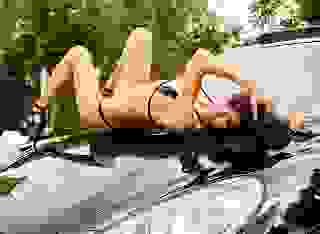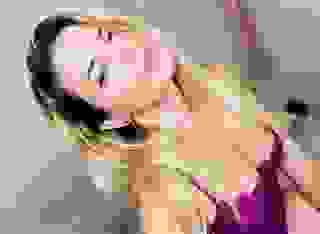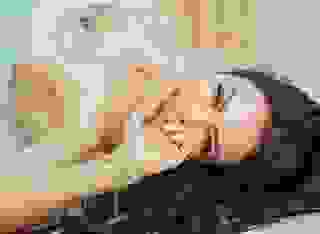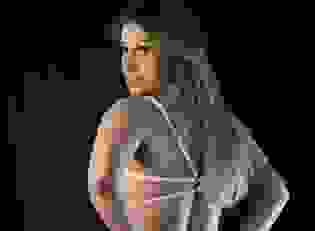Note: You can change font size, font face, and turn on dark mode by clicking the "A" icon tab in the Story Info Box.
You can temporarily switch back to a Classic Literotica® experience during our ongoing public Beta testing. Please consider leaving feedback on issues you experience or suggest improvements.
Click hereAnother problem with being bigger was that ambushing was harder than before. Luckily, the slime had already solved that problem with the trapping strategy. On the bright side: It was too big to be considered food by the water dragons anymore, even if it hadn't eaten or even fought one itself yet. Also, the next item on its list of foods did not possess the mobility required to even get out of the way of an ambush.
Clams, that was what the slime was now heading towards. The armoured muscles had no real predators in these waters, so there was a vast bank of them at the east side of the lake. As filter-feeders, all the clams needed to do to eat was exist someplace where they could filter-feed. What controlled their population was a mixture of a parasitic worm that managed to infiltrate the shells of weakened clams and the amount of food that was provided.
In many ways, the slime was the clam's worst nightmare. One would think that, if clams could be afraid of any natural predators, it would the starfish. In that way these clams here had lucked out. There was no star-shaped predator around that could stem open their shells and then bloat its stomach into them, externally digesting them before pulling the resulting protein sludge into its body.
No, these particular clams were spared from that nightmare. They just laid around in their black and beige shells all day, sometimes moving a few centimetres by extending their muscular tongues and dragging themselves over but otherwise doing as clams do.
Enter the slime. Normally, clams were not in the dietary range of slimes. For a start, most clams lived in saltwater, while slimes preferred to live around freshwater sources. Even if clams and slimes did share a biome, the latter usually didn't have the necessary acidity to break down the clam's shell in a satisfactory timeframe. They would try to eat them when they were desperate, but usually die of starvation before getting through.
THIS particular slime, however, was one of the rare occasions of being acidic enough, which the first clam soon found out, as it closed its shell to escape from the sudden viscous liquid enveloping it. They sat still, the bloated form of the slime was unable to hold more than one clam inside it at a time.
The slime was not aware of what exactly was happening. It heavily disliked the initial taste of the clam, to humans it would have been like licking chalk, but it felt that it was dissolving something, so it decided to wait. Time went by and, as the slime was thinking whether or not it should spit out the clam and go back to being pretend-moss, it finally happened.
An explosion of flavour. The shell was finally gone. Not completely, but a thin point allowed the acidic body fluid to rush inside and hasten the process. Much more importantly, it now tasted the protein rich flesh of the actual body.
Clams, decided the slime, were amazing. The whole waiting was finally worth it as it had a huge amount of food to digest. What was more, this tasted sweet and nourishing, completely different from the gunk eating insects. With something like that inside its proverbial belly, it wasn't even mad about having to sit around and wait.
It took, preparing to envelop the next clam in line, a journey of maybe three steps. Being steps of the slime's size. Living in large clusters of partially melded shells, these animals improved their survival chances by reducing their individual risk of getting eaten. They did that by simply displaying a sheer stupendous number of their kind.
For predators, that strategy meant they had a giant buffet sprawled out in front of them. Even better, as the slime was the only organism properly able to hunt (if that word was even appropriate) these clams, this was more like a 100% chance to win in a gamble. Which, technically, wouldn't be a gamble. It would just be winning.
Yes, the slime had just won a minor victory at life.
That first clam's last bit of flesh dissolved and left behind a very happy slime. Immediately it went to analyse what it was able to do now, having figured out that it could visualize the actual parts and what they would do in its nucleus. There were three organs of noteworthiness. One was the gills to filter feed. Then there was the tongue, or foot however one looked at it. Lastly, there was the organ that grew the shell.
The slime had very little interest in filter feeding, although it reckoned that it couldn't hurt to do it on the side. On the contrary, it could see the use in growing multiple tongues to use as feet while the shell seemed the most useful of all of all them.
All around, the clams were a wonderful addition to its toolkit. Particularly the shell would last for a long time since the useful part of it would just keep growing as long as it kept the organ active.
The slime, keeping a set of gills to filter feed and starting its shell production, began the process of flowing around the next clam. Time to keep licking at the chalk again, as many times as it took to get to the tasty insides again, then to repeat that process over and over again until it was big enough to challenge the apex predator of the lake.
The slime had to face a hard fact: Most of the growth options it acquired would eventually cease to be useful. The insect tail had already fallen out of viability. The eyes of all the kinds of creatures it had eaten until now quickly became less useful as well, as they became too small in comparison to its overall body to see a wide area in front of it. However, what bothered it the most was the lack of good legs.
By now, it was back to crawling, having reached the size of a grapefruit. The reason for that was quite simply because crawling was way quicker than walking on several clam tongues. It also was more viable, since that meant it would have needed at least four of its available outgrowths to do it satisfyingly.
It was highly peculiar to the slime that it could grow six insect legs like one but had to grow four tongues as four tongues. Logically speaking, it understood that the legs were part of one set, but the workings of its biology mystified it slightly. It understood that it worked and it understood how it worked, but it didn't understand what made it work. The answer to that was magic, which it knew existed despite having never encountered it. Whatever this gift it had to consume and re-develop its prey's features, it was, doubtlessly, magic. Didn't help with the understanding, really.
The slime also encountered another fact of being: After having reached its current size, clams stopped being an acceptable answer for growth. It could still eat them just fine, and did whenever it was hungry, but they didn't increase its biomass anymore. A new fallen batch of moss had soon shown lessened effects as well.
Instinctually, it knew that this was because its growth in mass didn't come from an actual absorption of material, not mainly at least, but instead the addition of new foreign strains of genes being analysed by its nucleus and it producing growth as a reward. In other words, once its nucleus had eaten enough of a species to understand it completely, there was no more progress to be had.
By the end of that set of revelations, the slime was contemplating a different question: why bother growing further? It was already too big to be hunted by the biggest predator around. On a matter of fact basis, it was safe. It had its own, uncontested food source.
It spent several digestion cycles, the best way it could measure time was by how long it took for it to get done with eating a clam, pondering that question. It had already arrived at the answer that it wanted to keep growing before it even began searching for reasons, but it felt that it needed to understand the whys.
The slime already had too many questions about itself to start with, so it didn't want to run around contemplating why it did things. It wanted to have purpose for stuff.
It arrived at a set of reasons, some of which it understood, others it didn't, at least not yet. The easiest, and most pressing, reason for why it wanted to grow beyond its current situation was because it understood that both it and the situation were not eternal. It had no idea what was outside the lake aside from a miniature cave, but it just knew that that wasn't the end of it. Even if this cave proved to be untouched forever by whatever was outside, the slime was pretty sure it wasn't immortal. A life spent just eating clams sounded like a life not particularly well-lived.
Which blended right into the second reason: It really didn't want to just be safe, it wanted to be the biggest fish in the pond. As it so happened, the biggest fish in this pond also possessed four functioning legs, so the challenge came across with an invitation to finally check out land.
Last of all, as it was the one it didn't quite understand, was the part of its mind that wasn't worried about just its mortality, but about leaving behind part of it. Procreation, that was the word. Something it wasn't yet capable off. Not for a lack of organs, theoretically it could have engineered the necessary parts, but when it tried out of sheer curiosity, all that got out was a minor explosion inside itself.
From that it learned three things. A: Whatever magic lay at its core, it was too strong to be passed onto something as inferior as a water bug, B: It really didn't like being the carrier of something that suddenly exploded inside it and C: Looking through the lens of procreation, everything in the pond just looked absolutely disgusting.
It thus vowed, despite practically being both male and female, to externalize such experiments in the future. Not that it was out to repeat it anytime soon. Also, it told itself that it would chase something sexually attractive to it instead. Now, it had no idea what that being would look like, but it just knew that it would be aware once it saw something that came into question as a mating partner.
For the moment, the slime had to consider how to acquire a set of functioning legs by eating a water dragon. Easier said than done. The pale lizards, with their red wreath of frilly antennae around their heads, were intimidating to look at. With their large tails they cut nimbly through the water. Their black eyes were bad, but their sense of smell made up for it. Lastly, they were so large that the slime would have a hard time wrapping itself entirely around their bodies.
These creatures, the one true apex predator of the lake were known as: axolotls.
And one particular fellow of their kind had already been the target of the slime's attacks twice and both times it had gotten away.
The first time around had been easy. Since the axolotl had no real experience with the approaching slime, it had acted carefully around it but, evaluating itself as the apex predator, not quite careful enough. In the exact same way, the slime had not given the axolotl the respect it deserved.
So, while it had successfully managed to wrap itself around parts of the creature, the slime had underestimated just how much power such a predator could muster. Wringing itself out of the slime's grip, the axolotl had gotten away with some nasty acid burns on its left foot.
The slime had then began to stalk that individual, easily distinguishable by a pair of red lines between its black dot eyes, through the lake. With one crippled limb, it was sure to be easier prey.
Turned out that it wasn't quite that easy. The water dragon had a regenerative factor that wasn't impressive but at the very least unexpected. It healed back without any scarring occurring. Eventually, the slime did manage to get the drop on it again, but even the wounds inflicted in that small engagement healed with time.
In comparison, the slime felt like it was getting the worse end of the stick in those engagements. Its mass getting ripped apart by escaping prey was terribly hurting. While it didn't lose a lot of biomass in the process, it expended a large amount of energy. Losing energy meant having to go eat, and the slime lost a lot of time going anywhere, slow as it was, time the axolotl could use to heal and hide somewhere else.
Another problem was, as dull as these animals were, they were smart enough to look through its hunting pattern eventually. Even the dumbest brick would wise up if hit with a hammer often enough.
The slime thus made sure that the third encounter would be the last. For that, it needed to prepare and the preparations took time, a lot of time. Eventually, however, they were done.
Falling back on the old moss strategy, the slime waited. It willingly let some bugs nibble away at the grown plant, it was fine to sacrifice some mass in exchange for bait. It laid there patiently, all five of the outgrowths it could currently maintain at the ready.
It took patience, lots of patience, but the slime had gotten no other lecture in life except for the fact that waiting paid off. It relied exclusively on its vibration sensing. Finally, it sensed its foe approaching.
It had spent several digestion cycles to set these things up. First it needed to make sure that the red-lined axolotl was the one hunting in this area of the lake. Then it needed to wait until there was a starvation period to attract as many insects to its bait-site as possible. Those were on the tail end of its preparations though.
The front end came into play when there was a sudden suction in the water. By rapidly opening their mouths, axolotls created an immense and sudden pull of water that delivered the food they smelled straight into their mouths. Reddie got his food, he also got a faceful of slime in the process.
That was step one of the slime's strategy, boost its ambush by the natural hunting pattern of the water dragon. Then it used the four tools that weren't a moss outgrowth to deal with the second problem it had until that point, which was keeping its grip on the thrashing predator. They all came courtesy of the clam, namely two half shells, the musculature meant to close such a shell and a tongue, and were all hidden beneath the moss which the slime hastily developed back to get out of the way.
After having successfully launched itself at the water dragon's face, the slime was sure it could hold on naturally for just long enough for the shell to close and secure its hold. The axolotl curled up, trying with all its legs to push or scrape off what was holding and partially digesting it. The shell was hard and quite smooth, so it had limited success in that endeavour. Realizing that, it went back to thrashing.
Which, even though axolotl couldn't know it, was the right strategy. Hard as they were, the shells were also inflexible and brittle. A lucky knock against a stone could have broken part of it, allowing the water dragon to make its escape and live to regenerate.
The slime had identified that problem already. Throughout the many, many times it had eaten clams, with every time that having to chew through the chalk taste of their shell, it had eventually figured out that it could puncture the shell if it just did it correctly.
That was where the tongue came in. Slow moving as it was, it was a strong muscle and once the slime managed grab the axolotl's right front leg with it, its hold was extra secure. The moss was soon replaced by a second tongue, which wrapped around the axolotl's other leg just in time for the prophesized smack against a rock to come.
It really pained the slime to lose a shell. Those organic shields took ages to grow and once shattered, everything that was directly connected to the growing point was best discarded, as it would only act like an ingrown fingernail. Except a shattered, ingrown fingernail.
As the pieces of broken shell tumbled to the ground, the axolotl was slowly running out of steam. From the outside, it looked like the water dragon was wearing a very odd shell-hat, with two tongues strapping it on by its shoulders. In truth, it was now doomed to be the slimes next meal, as it claimed the victory condition of this fight: the external gills of the creature.
The slime had no idea that it had won by encapsulating the frilly red things, but the fact was that with them dissolving, the axolotl was now suffocating. It couldn't be said which was the worse way to die, having one's brain slowly dissolved, or suffocating while deaf, blind and even robbed of its sense of smell.
There was no mind to pay that from the slime's side, nature was cruel like that. The winner wrote the rules and it was most decisively the winner.
The slime liked discovering things about itself. The newest thing it learned about itself was that there was a difference between Growths and Attributes. Of the former, it could maintain a total of six now. There was some relation between its diameter at complete unchanged form, one it rarely assumed, and the amount of possible Growths, but with neither a tool to measure itself nor an idea what a measurement unit was, the slime only knew that there was some relationship.
Anyway, it could maintain six Growths right now. Each of them was a limb, a muscle, or some sort of actual body part of a prey item it had feasted on before. Attributes were different. Those didn't require the drop of evolving soup to grow anything visible. It was more of a passive effect.
The only one it had right now was the axolotl's regenerative abilities. Not particularly helpful, since the slime rarely if ever had things that could be categorized as wounds, but once formed it didn't feel like disabling it again.
It still took time to develop, more even than getting a new Growth, as its whole body was affected by this Attribute, but it went on a different count. Speaking of counting, the slime had tried to stretch that number's limit, despite its instincts screaming that it was a horrible idea, to find out that was an absolutely horrible idea.
The number it instinctually went with, without even really knowing what numbers were, seemed to be what its body could sustain in energy consumption or something, fact was, that after successfully growing itself a seventh limb, it soon keeled over from exhaustion. Luckily, it was too large to be eaten by anything around and its body retracted all Growths it had at that moment to conserve its remaining stamina. A terrible crawl to the clam fields and one of the name giving stationary animals later, the slime had pepped iteself up again.
It vowed not to repeat that. Especially not since it was about to leave its watery home.
A very odd amalgamation swam just below the surface of the lake. On first glance, one may have mistaken it for an axolotl. That would be fair enough, the slime had formed the legs, the tail and something resembling its head, wanting the nose and mouth, after all. However, even that first glance would cause someone to look again.
For a start, the slime didn't have eyes. The axolotl's sense of smell was good enough for directions as far as it was concerned. Also missing were the trademark frilly antenna, and the external gills which the slime had no need for. Those four things took most of the Growth capacity the slime had. The remainder of it was used to develop two shell growing organs, two half shells growing in opposite direction on the slime's back.
That made it, overall, look more like a turtle than an axolotl. A very weird turtle, without anything to protect its stomach.
This very peculiar mix of designs was currently looking for an ideal spot to get on land. Most of the lake had a steep, rocky edge that the slime couldn't climb with its feet. It could have tried to used its amorphous, normal body to do the climbing, but the shells would have been too heavy and pulled it back under. It didn't have the suction power required for this task.








